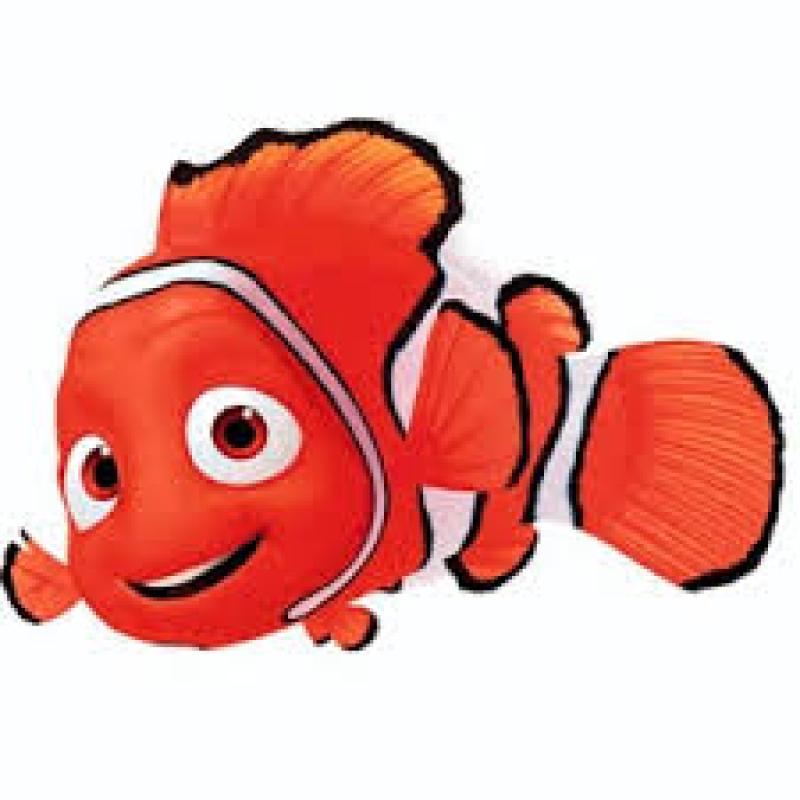This Is Your Brain on Fatherhood


What clownfish stepfathers and Dad-of-the-Year foxes teach us about paternal neurochemistry in the animal kingdom
If you’re a bat-eared fox, a handful of things in life are certain: adorably gargantuan ears, tasty termites and some serious quality time with dad.
That’s because bat-eared foxes are among the 10 percent or so of mammals that regularly provide paternal care to their young. Pops in this species are so dedicated that males spend even more time than females near the dens that house their offspring. These furry fathers play a role in nearly every aspect of child-rearing: grooming cubs’ silky fur, engaging them in play and teaching them to stalk terrestrial insects with their bat-wing-shaped ears (which can grow up to five inches long—nearly 30 percent of their total height).

The Africa Image Library / Alamy
And this commitment pays off: The amount of time bat-eared fox fathers spend monitoring their young is an even bigger predictor of pup survival than maternal investment or food availability. Dads, at least in this species, matter.
But what determines whether a dad will be so devoted? Defining paternal dedication is a fraught field of study, but according to scientists, much of paternal behavior seems to boil down to just a few brain basics.
Because the entry into fatherhood isn’t cued with the same slew of physiological changes that accompany pregnancy and motherhood, the biological and chemical bases of paternal behavior have remained somewhat mysterious. However, recent discoveries show that, across vertebrates, the recipe for a good dad is actually pretty clean-cut: think more like mom. “As males become paternal, [their brains] become more like females’,” says Toni Ziegler, a primate biologist and psychologist at the Wisconsin National Primate Research Center.
The big question: What drives fathering behavior in the first place? It turns out that, even without pregnancy and childbirth to prime them, the brains of new mammalian fathers undergo many of the same changes as their female mates’. Some of this may be triggered by being exposed to maternal behaviors and hormones even before the arrival of offspring. In other cases, the birth of an infant can stimulate the brains of new fathers via touch, smell or sight.
“In females, there’s physiological changes prior to maternal care, because females play a larger role in terms of their metabolic investment [in offspring],” says Ross DeAngelis, a clownfish biologist at the University of Illinois at Urbana-Champaign. “The priming to cue fatherhood is a lot more subtle.”

Ulrich Doering / Alamy
These changes include increases in a few hormones that have massive effects on the brain: oxytocin, estrogen, prolactin and vasopressin. Oxytocin, famously nicknamed the “cuddle hormone,” appears to play a well-established role in parent-infant bonding, particularly in the days following birth. For instance, recent research shows that male non-human primates making more oxytocin seem to be more responsive to needy infants.
Estrogen and prolactin can also make a big difference in readying dads for childcare. In fact, the male body will actually repurpose some of its existing resources to achieve these attentive effects. Testosterone, which occurs in abundance in most male bodies, can be converted to estrogen through the actions of an enzyme called aromatase. During their mates’ pregnancies and in the months after birth, the testosterone levels of new fathers—including humans—will actually plummet as estrogen builds up in its stead, encouraging fathers to nurture their young.
And while prolactin is critical for the production of milk in new mothers, it can also be responsible for many of the symptoms of pregnancy—nausea, weight gain and fatigue. Mammalian fathers who pack on “sympathy” pounds, collecting extra fat in their bellies and breasts, may actually be pumping out prolactin themselves. There’s even some evidence in non-human primates that this increased energy storage is a way for dad to prep for the taxing emotional and physical toils of fatherhood, says Ziegler.
Another chemical, vasopressin, which shares an evolutionary history with oxytocin, seems to have drastically different effects depending on the context and the species. In monogamous prairie voles, who care for their young in pairs, vasopressin seems to enhance both mate fidelity and paternal care. However, in California mice, which also jointly raise their offspring, vasopressin seems to play no role in triggering dads to tend to their young and could actually promote aggressive behaviors that detract from family time. Limited studies in humans corroborate the idea that vasopressin is, at best, a supporting character in the development of fatherhood.
Some of the best lessons on fathering come from outside the realm of mammals. As it turns out, fish put mammalian dads to shame. It’s true that most fish don’t parent their young, which are typically liberated into the vast wilderness at the egg stage, but of the 20 percent of species that do, less than a third exhibit female-only care. A whopping 50 percent of parenting fish are raised by single dads—including the clownfish of Finding Nemo fame.
Finding Nemo didn’t exactly make waves for scientific accuracy—for instance, clownfish papa Marlin should have undergone a sex switcheroo to female when his partner Coral died—but it was right about was Marlin’s neurotic dedication to his son Nemo. After a female clownfish lays a clutch of eggs, her partner takes over the majority of the workload. As a stay-at-home dad, the male clownfish spends most of his day meticulously fanning and nipping at the eggs to keep them clean. Meanwhile, the larger, more aggressive mom circles their anemone home, defending against potential invaders and predators.
According to DeAngelis, the clownfish biologist, female clownfish can lay a new batch of eggs every two weeks for up to 30 years. Synced onto this cycle, male clownfish may spend the vast majority of their lives as family guys. “It’s a remarkable display of paternal care,” DeAngelis says. Male clownfish, which are highly visual, may be keenly tuned to the mere sight of these eggs, adds Justin Rhodes, a biologist and clownfish expert who oversees DeAngelis’ work. These visual cues trigger a vast rewiring, alongside a suite of pheromones potentially released by pregnant females.

Jane Gould / Alamy
It’s been hundreds of millions of years since the common ancestor of mammals and fish swam the seas. But much of that original brain chemistry is still pretty much intact, according to Rhodes, and the brain-behavior connections in clownfish likely have enormous bearing on our own evolution. Humans may not lay eggs or breathe through gills, but parenting is as ancient as it gets. Clownfish even encode their own fishy versions of oxytocin, estrogen and vasopressin—the same hormones that can affect mammalian fathering behavior.
In two recent studies, Rhodes and DeAngelis monitored the behavior of male clownfish recently thrust into the perils of parenthood. Knowing that oxytocin played a big role in clownfish fathering, they exposed male fish to a drug that impeded this hormone’s ability to signal in the brain. Unsurprisingly, dads experiencing this chemical blockade were less interested in nurturing their eggs, instead letting them languish. In a follow-up, Rhodes and DeAngelis confirmed that brain pathways responsive to oxytocin became ultra-sensitive in new clownfish fathers. What’s more, testosterone-converting aromatase was kicked into overdrive in males whose mates had recently laid eggs, driving the production of estrogen—much like their mammalian counterparts.
On the other hand, treating clownfish dads with a drug that interfered with vasopressin signaling increased nipping and fanning behavior—an astonishing finding for Rhodes and DeAngelis, as male clownfish were already deserving of a Father of the Year award.
According to Rhodes, fishy vasopressin seems to be in charge of aggressive, territorial behavior—habits both males and females need to chase away hungry damselfish hankering for a clownfish omelet, for instance. Vasopressin may mean infatuation for voles, but in clownfish, it’s more about vigilance and hostility—which may be mutually exclusive with the stewardship of paternity. It’s a big ocean; a single fish can only do so much at a time.
But sometimes, the senses can deceive. The male drive to care for offspring is so strong that anemonefish have even been shown to stepparent: put a male clownfish in a tank with eggs that aren’t his own, and he’ll almost immediately begin his ritualistic egg-fanning and -nipping. “The brain changes are instantaneous,” says Justin Rhodes, a biologist and clownfish expert who oversees DeAngelis’ work.
Stepfathering clownfish, by virtue of their inadvertent altruism, embody the pitfalls of this system. By investing in someone else’s eggs, they’re shooting themselves in the foot, evolutionarily: all those hours spent with another fish’s kids is time they could otherwise be devoting to mating and passing their own genes onto the next generation. Across all parenting species, childcare can simply sap time away from what may be more pressing matters: scuffling for dominance, hunting prey, or mating with females.
So perhaps it’s no surprise that paternal care is somewhat rare among animals. But one thing is clear: the likelihood of paternal care skyrockets if animals are monogamous. Nearly 60 percent of mammals who choose long-term mates have shown evidence of males caring for young. That makes sense—pair bonding increases the certainty of the paternity of the female’s offspring, so there is a greater incentive for the male to invest. But there’s more to the equation.
Taking some of the burden off mom means that her post-pregnancy recovery time is significantly shorter. With dad around, it’s easier for her to get back on her feet and start hunting again, or surveilling the neighborhood for threats. Perhaps the biggest driver, however, is a speedy return to female fecundity. And when the female ovulates again, she needn’t look far for a willing partner. This may cast a more sobering light on the “selfish” motivations behind paternal care.
But there’s more to an attentive dad’s job than ensuring an expedient next pregnancy. For many mammals, having a nurturing father tends to have long-lasting effects on the physical and behavioral health on kids. In several mammals, male investment increases offspring litter size, survival and sociability. Fatherhood may not be ubiquitous, but it appears to have evolved independently in many different lineages, lending credence to its importance in the diverse communities it pervades.
“If [as a father] you invest heavily in offspring, you may be investing more in fewer,” Ziegler explains, “but the few get a better opportunity to survive and grow.”
Tags





